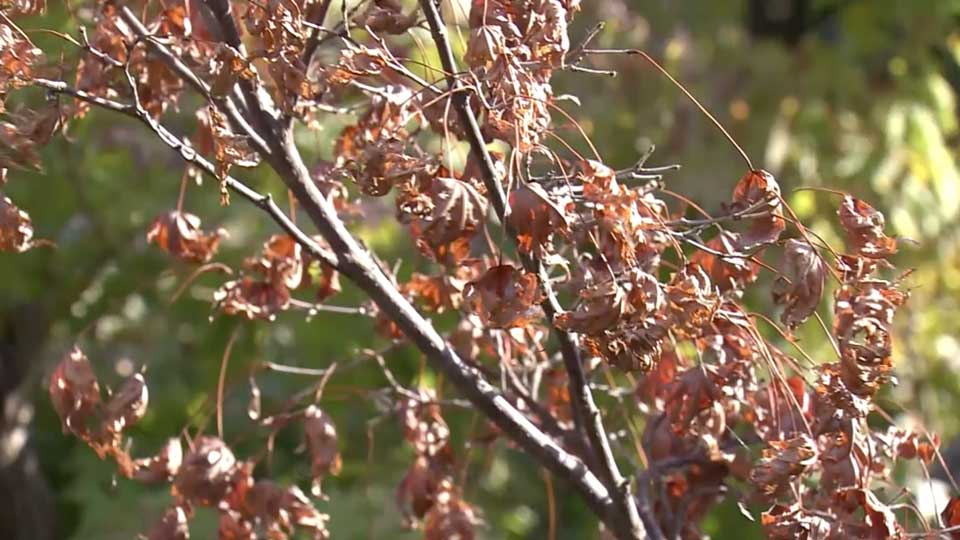The Meteorological Agency on Wednesday said most of the snow on the top of Mt. Fuji has melted due to unseasonably warm weather over the past few days.
In the eastern part of Japan, temperatures have been higher than usual since the beginning of this month due a flow of warm air. On Wednesday, central Tokyo marked the highest temperature for November since records began being kept in 1923.
Temperatures have also been unseasonably high at the summit of Mt. Fuji. On three successive days through Tuesday, temperatures at the top of the mountain didn't fall below zero. This has only happened seven times since record-keeping began in 1932.

Ski resort postpones opening
A ski resort in Nagano Prefecture is struggling amid a shortage of snow. It planned to open its ski slope last Friday but has postponed it to at least mid-November because the artificial snowfall keeps melting.

"If temperatures return to normal, it will be easy for us to make artificial snowfall. We'll do what we can. I hope skiers will wait a little longer," one official says.
Kyoto's fall foliage looks different
The ancient capital of Kyoto — known for its beautiful autumn colors — is also feeling the impact of warmer weather.
Umekoji Park in Kyoto City is home to about 300 Japanese maples, or momiji. Many tourists from Japan and overseas alike flock there to see the peak autumn foliage.

But park officials say some of the maple branches have died due to the summer heatwave and a lack of rain.
"The trees couldn't get enough rain this summer. We tried to water them but couldn't keep up," one official says.

Prolonged warm weather has also impacted the foliage at Kyoto Botanical Gardens.
The garden's Zelkova trees usually turn bright red and yellow in early November. But this year many of their leaves fell before changing color.
"The foliage is not as bright as usual," says Nikuto Hiroyuki, the garden's vice director.
Some of the garden's maple branches have also died, but happily the trees located near a pond have remained healthy.
"If the temperatures stay high, the foliage season will be pushed back. So we're watching the situation closely," Nikuto says.

Expect more record-breaking weather
NHK World meteorologist Tsietsi Monare analyzes the unseasonably warm weather.
Several factors are contributing to the warm fall weather in Japan and many other parts of the world.
First, a persistent South Pacific high-pressure system caused record heat this summer and continues to have an impact on temperatures.
A second contributing factor is El Nino, a naturally occurring climate pattern.
During an El Nino year such as 2023, eastern Pacific Ocean surface temperatures tend to be much higher than normal, leading to extreme weather events such as typhoons and abnormally high temperatures.
According to the Copernicus Climate Change Service, one area of the Pacific's sea surface reached 20.92 degrees Celsius in September, setting a new record for the month.
The combination of El Nino and climate change could cause more record-breaking weather conditions in the short and long term.
Going forward we should prepare for warmer winters, which could have a great impact on both humans and animals worldwide.

